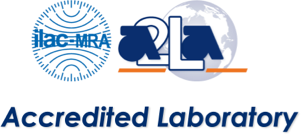Salt Spray / Salt Fog Test
A salt spray test, otherwise known as a salt fog test, is used to evaluate the corrosion resistance of different materials and surface coatings.
What is the purpose of a salt spray test?
Salt fog testing enables one to determine the quality and reliability of a product under corrosive atmospheric conditions. By exposing these materials and surface coatings to a salt spray solution during the testing process, engineers simulate the corrosive atmospheres that an item may face in a real-world environment.
Depending on the end-user or installation environment, most materials and consumer products have a high probability of being subjected to some corrosive atmosphere exposure during their lifetimes. This test verifies the ability of materials and products to withstand exposure to a high salinity environment.
A salt spray test can be used to evaluate the corrosive resistance of a wide range of materials and surface coatings. Some of the most common materials that undergo salt spray testing include:
- Paint coatings
- Organic coatings
- Phosphate coatings
- Zinc and zinc alloy metal plating
- Chrome plating, copper, nickel, tin
- Zinc flake coatings
How is a salt spray fog test performed?
A salt spray test is performed according to ASTM B117 standards. While specific lab equipment may vary, the steps one must take in order to conduct a salt spray fog test are as follows:
- Apply the sample coating to a small panel. The size of these panels generally ranges from 3×5 inches to 4×6 inches. You may apply paint, wax, or tape to the back of the panels to afford some degree of protection.
- Create a scratch on the front of the panel that penetrates through sample coating and exposes the metal substrate.
- Place the panel into the testing chamber and attach it to a support that can ensure the panel maintains a position of 15 to 30 degrees from vertical.
- Close the testing chamber and use an atomizer to administer the salt spray solution at a consistent rate and temperature. The salt fog should be directed upwards so that droplets fall onto the panel.
- At this point, engineers are tasked with observing the panel and the effects the salt fog has upon the sample coating. They should record the progress of the tests and whether or not they witness any premature corrosion.
The engineers at WESTPAK are experienced and knowledgeable when it comes to conducting salt spray tests in accordance with ASTM B117 and interpreting test results. Our lab is home to a 26 cubic foot salt fog chamber where these tests commonly take place.
How important is an ASTM B117 test?
An ASTM B117 test is very important if you want to determine how resistant a particular material or surface coating is to corrosive environments. This kind of testing is especially crucial if you’re dealing with materials that are particularly vulnerable to corrosion.
For instance, materials commonly used in the automotive, aviation, and marine industries are often subject to salt spray tests since they consistently have to face the stresses of a corrosive environment.
At this point, you may be asking yourself why corrosion is considered a problem in the first place. The fact is that corrosion can damage products and ultimately reduce their effectiveness. Left untreated, corrosion will often have a degenerative effect on products and, in the long run, can render them useless. In certain cases, materials, surface coating, parts, and machines that experience severe corrosion can pose a serious safety hazard.
With an ASTM B117 test, manufacturers can simulate how corrosion affects their products in a time-efficient manner. If one finds that their product is too sensitive to corrosion, they can implement necessary adjustments to make their product more durable and safe. Thus, salt spray tests can help optimize a product’s performance and lifespan, which benefits both the manufacturer and the consumer.
At WESTPAK, we can conduct more than just ASTM B117 testing. Below are the typical procedures and protocols that Westpak adheres to:
- ASTM B117
- MIL STD 202
- MIL STD 810
What information can a salt spray fog test provide?
Conducting a salt spray fog test can provide manufacturers and designers with valuable insights into their products. Analyzing the results of a salt spray test allows one to:
- Evaluate the corrosion resistance of a metal or surface coating
- Compare the corrosive resistance of different materials and surface coatings
- Observe how much corrosion may occur when a particular material is scratched or scraped
- Evaluate coating adhesion
What are the general test conditions for ASTM B117?
Testing is conducted at warm temperatures and calls for a salt fog to be allowed to settle over the samples at a specified rate. Typical test sequences run approximately four days in duration and provide a good comparative test between design alternatives for resistance to salt fog environmental exposure.
What type of salt solution is used in a salt fog test?
A salt fog test typically uses a solution of saltwater that contains 5% NaCl. The salt spray solution is atomized and exposed to the testing sample in a closed salt fog chamber. Once the test has been completed, the testing sample is removed from the salt fog chamber and evaluated by our team of engineers.
WESTPAK Testing Solutions
The team at WESTPAK is committed to providing companies with useful insights through comprehensive testing. We are experienced when it comes to conducting salt spray tests and work hard to provide reliable results. Contact us today to schedule a salt spray test for your product.
Accreditations:

Testing at WESTPAK has been accredited by A2LA to comply with ISO 17025.

WESTPAK testing labs are ISTA certified to perform a variety of tests.
